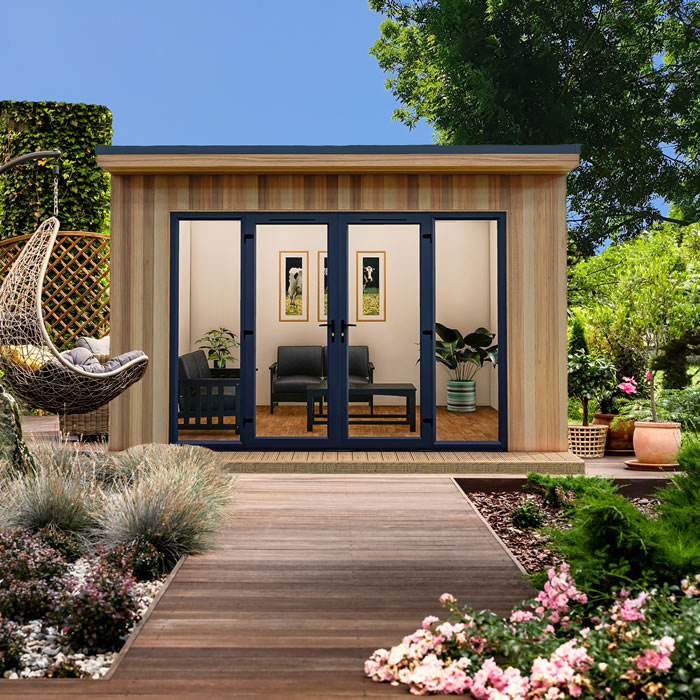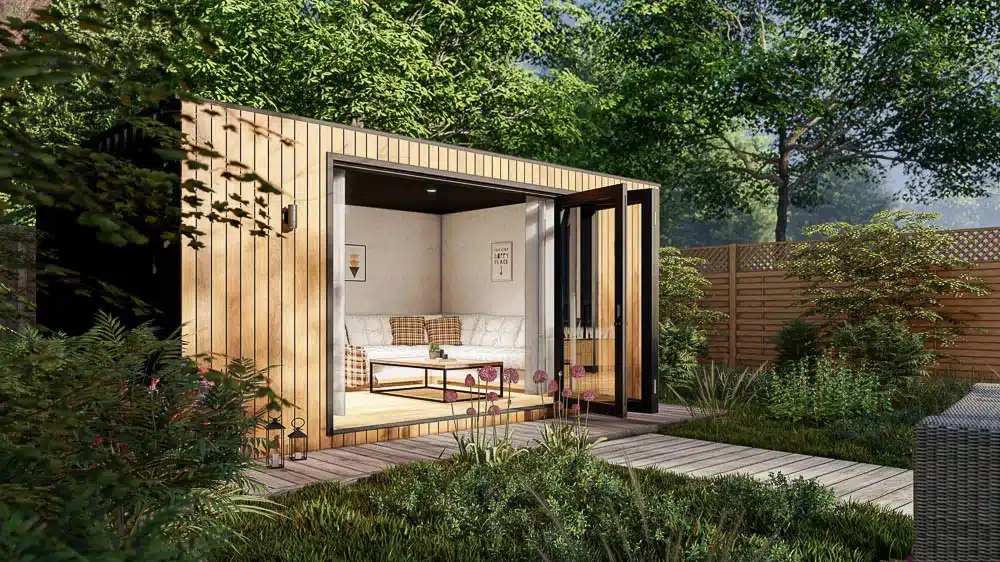Good Advice On Planning Permission For Garden Offices
Good Advice On Planning Permission For Garden Offices
Blog Article
What Planning Permits Are Required For Garden Rooms And Other Structures?
If you need permission to plan the construction of conservatories, garden offices and outhouses, or garden rooms depends on specific dimensions. Here's a brief overview of typical size-related factors you might have to take into consideration when seeking permission for planning.
If the outbuilding is detached the planning permission is typically required if the total area of the proposed construction, along with any other existing outbuildings, exceeds 50 percent of the total area of the land around the original house (excluding the footprint of the house itself).
Height limitations:
One story buildings have a maximum eaves that should not exceed 2.5 metres and for roofs that have a dual pitch, or any other roof type it shouldn't be more than 4 meters.
The height of buildings less than 2 metres away from the property's boundary must not be more than 2.5 metres in the height.
Floor Area:
Even the planning approval isn't needed, structures that have more of 30 square meter might require approval according to the building regulations.
Proximity to borders
If the structure exceeds 2.5 meters in height and is within 2 metres of a boundary then planning permission is required.
Building Use
While not strictly a size restriction, the intended use of the garden room can impact whether planning permission is required. If the property is used for residential purposes or as a commercial space, for example the likelihood is that planning permission will be needed.
Permitted Development Rights:
Permitted Development Rights are subject to certain size limitations and conditions. These rights differ based on whether the property is in a conservation area or subject to other restrictions.
Conservatories or Extensions
For rear extensions with a single story, the maximum depth of an extension is typically 4 metres for detached houses and 3 metres for terraced or semidetached homes. It is possible to raise it to 8 meters or 6 meters in the Neighbourly Consultation Scheme if certain conditions apply.
The height of an unistory rear extension should not exceed 4 metres.
Side Extensions
For side extensions, width and height should not exceed four meters.
Volume Restrictions
In certain areas (like conservation zones or Areas of Outstanding Natural Beauty) any addition that expands the size of the existing house by more than 10% or 50 cubic meters (whichever is greater) could require planning permission.
Front Extensions
Planning permission is required for any extensions that go beyond the front of the home.
It's important to confirm with the local authorities, since regulations vary based the location you reside in and the condition on the property. In addition, even the planning permission doesn't have to be sought, building regulations approval might be needed for structural and safety for structural integrity reasons. Take a look at the top rated 4m x 4m room for more info including outhouse garden rooms, garden room, herts garden rooms, garden room or extension, insulated garden rooms, garden room planning permission, outhouse uk, costco outhouse, 4m x 4m garden room, garden rooms near me and more.
What Is The Planning Permission Required For Garden Rooms Etc.?
Certain considerations and rules are required when building garden rooms, conservatories or outhouses on the property of a listed building. Here are some important points to consider when applying for the planning permission needed for these projects: Listed building consent:
Any extension, alteration or construction that falls within the boundaries of a listed building usually requires listed building consent as well as planning permission. Modifications could alter the character of the listed building.
The impact on the character of historical characters:
Planning permission is required for any new construction or extension that might alter the appearance or historical character of the listed building or its surroundings. This includes garden rooms and outbuildings.
Design and Materials
It is important that the style and materials used in the construction of the new structure are compatible with the architectural and historic importance and value of the old building. It may be necessary to use traditional materials and bespoke designs, which require approval for planning.
The building is close to the listed:
New structures built nearby the listed building will be scrutinized to determine their impact on its setting and appearance. The character of the building won't be affected when planning permission is granted.
Size and Scale
The garden room size the size of the conservatory, extension scale should be in proportion to the size of the listed building. More expansive structures are more likely to need a thorough analysis and planning permission.
Location:
The position of the new structure (whether in front, side or back of the listed building) may affect the requirement to obtain planning permission. Visible locations or those impacting crucial views of the building usually require more rigorous review.
Modifications in the Internal Structure
Even if you're removing the structure that was previously in use, any internal changes that will be built must be approved by the planning department and have approved building permits.
Conservation Area Overlap
If the building is within a conservation area additional restrictions apply. To ensure that the building is in compliance with listed building regulations and conservation area regulations Planning permission is required.
The building's use:
The intention of using the outbuilding or garden room may influence the need to obtain planning permission. The planning authority will be more attentive to uses that indicate a change of significance for commercial or residential usage.
Structural Effect
All constructions that might alter the structural integrity listed buildings require approval for planning and listed-building permission. This is to ensure that existing and new structures are able to be safely incorporated.
Local Authority Guidelines
Local authorities often have specific guidelines for listed buildings that outline what kinds of modifications and construction are permitted. Planning permission will ensure these guidelines are observed.
Professional Assessments
Conservation experts usually conduct extensive assessments on proposals for the work to be carried out on listed building. These assessments can help to determine the feasibility of the proposed changes and offer an argument for the plan application.
Summary The planning permission and listed-building consent are required almost always when building garden rooms, conservatories or outhouses. The same is true for extensions, garden offices and gardens offices that are attached to listed properties. Consult your local planning authority as well as heritage professionals in the initial phase of the process of planning to ensure compliance with the applicable rules. This can also protect the historic and architectural integrity of the building. Check out the recommended live in garden for site info including costco garden buildings, garden room permitted development, do i need planning permission for a garden room with toilet, outhouse for garden, garden office hertfordshire, costco garden room, composite garden office, garden room or extension, myouthouse, composite garden office and more.
What Planning Permissions Do You Require For Gardens, Etc. In Terms Of Location Restrictions?
It is essential to consider location restrictions when you are planning to construct garden offices, conservatories, or outhouses. Here are the key location-related criteria to consider proximity to boundaries:
A structure that is located less than 2 meters from the property's boundary must not exceed 2.5 meters in height. If the height is higher than the maximum limit, a planning permit is required.
Front of the Property:
Buildings or extensions that are constructed in front of the main elevation of a home (the face-facing side) generally require approval for planning. This is due to the fact that the permitted development rights typically do not permit them.
The property's side:
If the extension extends past the current wall, it will often require permission for planning.
The back of the property
There are height and size restrictions on rear extension extensions. Planning permission might be required in the event that the extension or garden rooms are over the permitted development limits.
Designated Zones
In conservation areas, Areas of Outstanding Natural Beauty (AONB), National Parks, as well as World Heritage Sites, stricter control is in place. Planning permits are necessary for all new structures regardless of size.
Heritage Buildings
The properties that are listed have strict guidelines. Whatever the location of the structure is situated on your property, you'll require planning permission and approved building permits to make any changes or extensions.
Green Belt Land:
Building on green belt land is severely restricted in order to preserve open space. Most of the time the construction or alteration that is major requires a special permit.
Areas prone to flooding:
If the property is located in a flood risk area there are additional rules to ensure the new structure doesn't increase the risk of flooding. A flood risk assessment and planning permission may be needed.
Urban vs. Rural settings:
In cities, rules tend to be different from those in rural zones. Rural properties may be more flexible with regards to restrictions in regards to the size and location of outbuildings. This varies greatly.
Highways and Public Rights of Way
It is possible to get planning permission if the structure is located near highways or public rights of way. This will ensure that the construction does not hinder views, access or safety.
Shared Ownership or Leasehold:
If the property is leased or part of an ownership sharing scheme, it may require additional permits. Planning permission might be required based on local regulations.
The Structures Adjacent:
If the structure being built is planned to be constructed adjacent to existing structures or buildings especially those located on adjacent properties, planning permission could be required to ensure the structure does not have a negative impact on adjacent structures or land.
It is recommended to always contact your local authority on planning to receive advice specific to the location of your home and property. Regulations may differ significantly depending on local laws and the need to ensure the compliance of all applicable restrictions is essential to avoid legal problems and penalties. Check out the top rated summer house heating for website info including garden room planning permission, ground screws vs concrete, composite summer house, do i need planning permission for a garden room with toilet, costco garden office, garden room conservatory, how to lay decking on soil, outhouse garden rooms, outhouse builders, garden room or extension and more.